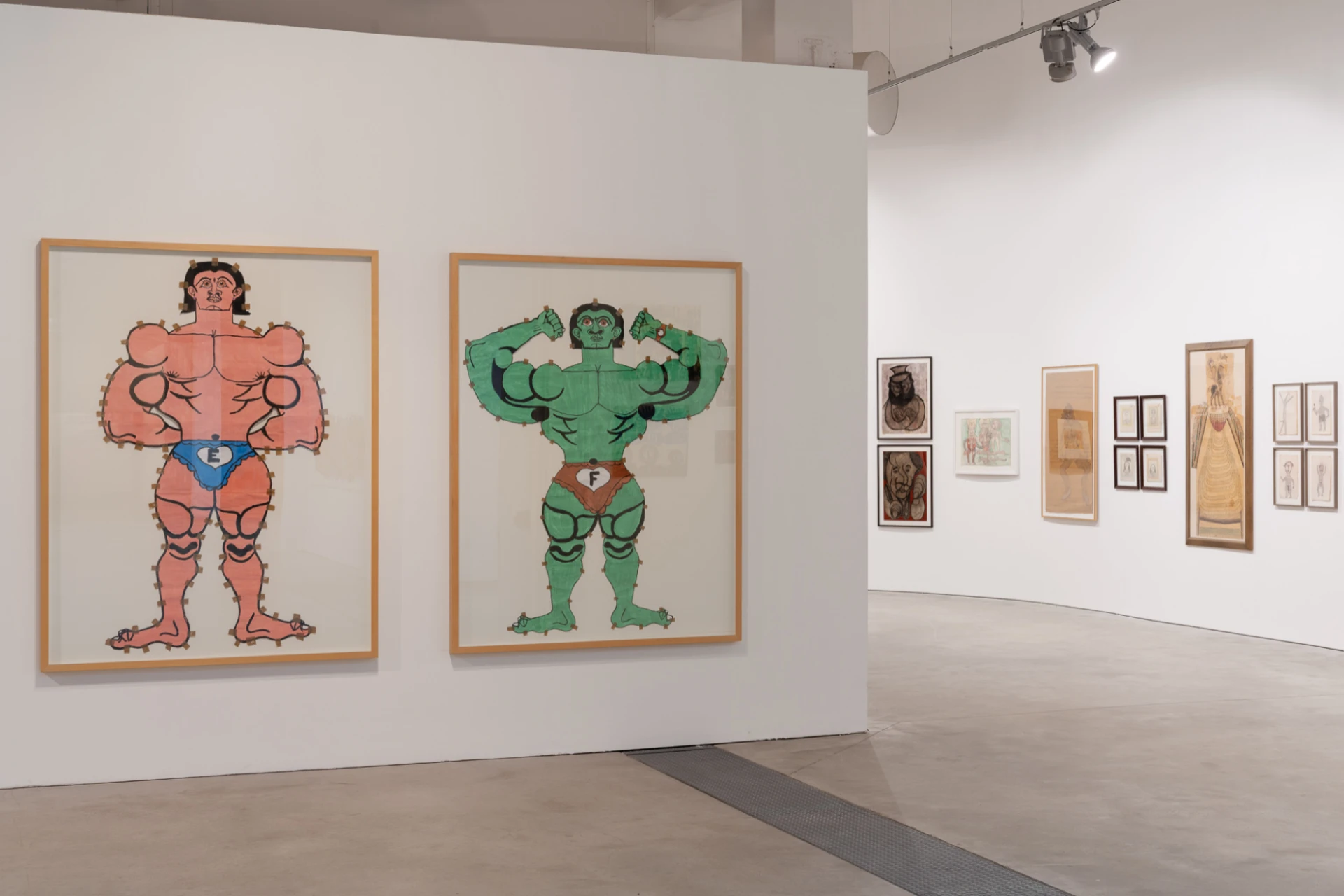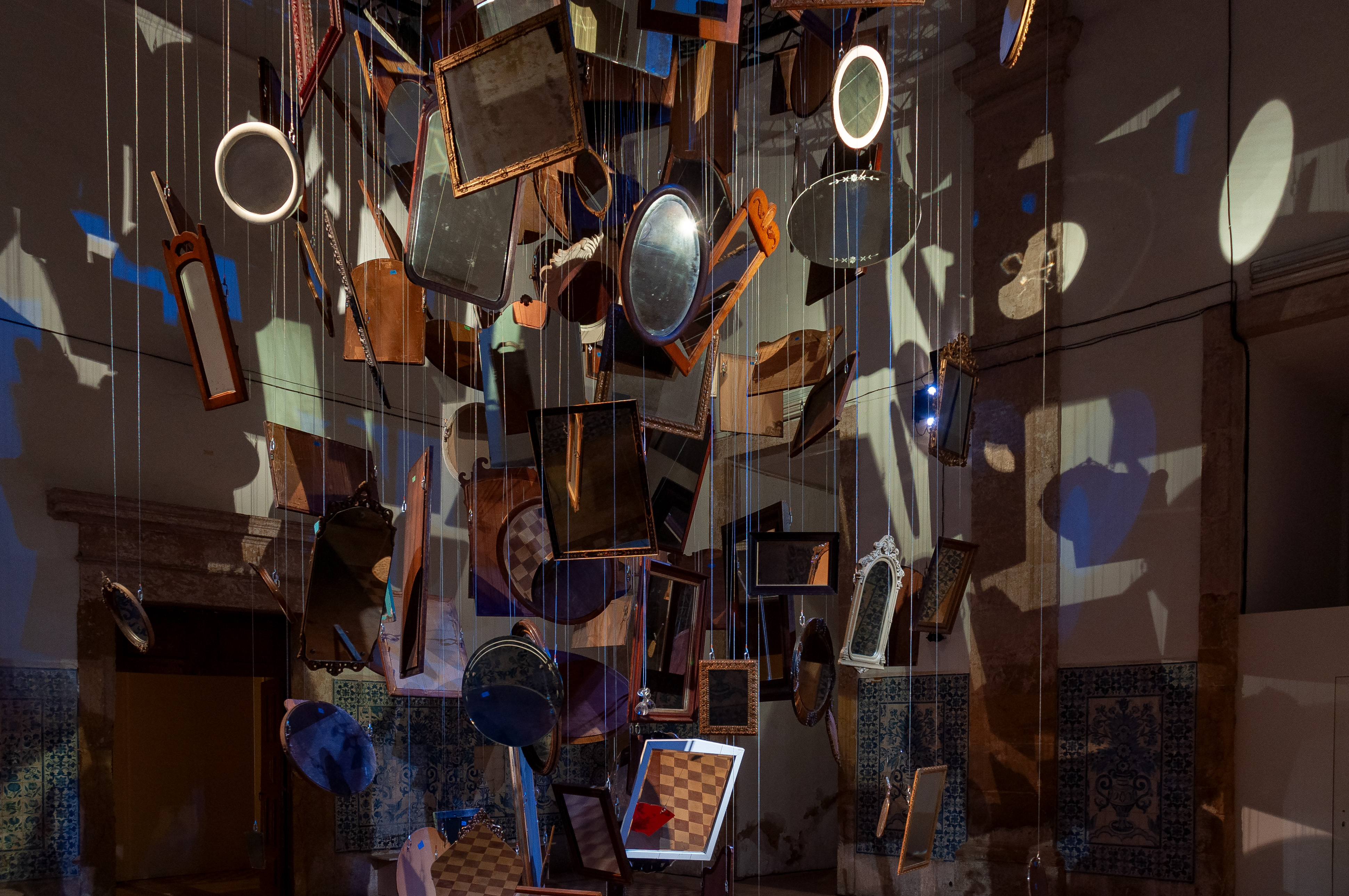article
UMBRA, by Hugo Canoilas
The traditional ceramics of Molelos, megalithic sites, and some paintings by Grão Vasco nourished the new works of Hugo Canoilas (1977), which are on display at the Galeria Venha a Nós a Boa Morte (Viseu) in the exhibition ‘Umbra’.
Immersing us in a dialogue between shadow/light; light/dark; visible/invisible, the exhibition imposes itself, from the very beginning, through the articulation between the blackness of forms and objects produced by the artist and the brightness of the exhibition space, accentuated - in a challenge to architecture - by the beige carpet that stretches across the gallery floor, creating a game of shadows, provocations and confrontations.
The darkness, to which Hugo Canoilas offers himself with empathy as a place of artistic freedom that, from the point of view of thought, allows for rewritings and rereadings, is translated into an exhibition whose works - mainly ceramics - translate a praise to the shadow and the way they contain the properties of objects - physical or otherwise - in relation their negative, represented by decal.
Rooted in a strong theoretical and reflective component, Hugo Canoilas' artistic practice reveals to us, with diverse implications, a fascination with darkness and shadow as places that enable new cognitive and sensitive ways of relating to and perceiving the world, as well as an acute awareness of one's own body. In this regard, we recall recent projects by the artist: A Gruta (Galeria Quadrado Azul, 2019-23), a dark place, ideal for new cosmogonies to be realized; Moldada na Escuridão (Museu Calouste Gulbenkian, 2021), an installation whose darkness dramatized the ocean floor, its potential for wonder and the unknown, in a subordination of vision and emancipation of the other senses; or the pictorial installation Phantasmagoria (CAV, 2023), which, highlighted by an amber light and the impossibility of the spectator seeing the whole, created different choreographies and a vision of wonder at each step.
Similar to the exhibitions mentioned above, whose works and the darkness of the spaces required the public to become involved, to walk around and over the pieces, in a process of discovery and editing of what is seen, in Umbra the materiality, techniques and colors of the works on display also involve our psyche in the creation and establishment of relationships. The performative potential of the public's interaction with the works, as well as the unconscious perception of our body as a tool for artistic experience, are shown to be intentional on Canoilas' part as we walk over the softness of the beige carpet and bend down to observe the floor pieces whose blackness extends across the surface.
Resulting from an artistic residency in Viseu, organized by the VNBM gallery from December 2024 to February 2025, and proposing an articulation between cultural elements of the region and his practice, Umbra presents some interventions in the gallery space, drawings and ceramic pieces developed from traditional objects, inscriptions from the megalithic to the medieval periods and details of Renaissance paintings by Vasco Fernandes (1475-1542) in a heterogeneous manifestation between the erudite and the popular, the social and the artistic that brings together the various forms in a mimesis between the ethos and the praxis of the author. Carried out in three different periods, throughout the residency, field visits and field prospecting were carried out, which, in an exercise of exploration, discovery and collection of materials, allowed the artist to absorb knowledge about cultural, historical, vernacular and popular manifestations of the territory1. Between cultural visits to museums - Museu Grão Vasco and Museu Keil do Amaral -, contact with local artists and artisans, walks through the landscapes of Serra da Arada, Serrazes, and the exploration of megalithic sites, the artist absorbed stimuli, sensations and experiences that materialize in the body of the works on display.
Shadows collected by the artist, details of a painting from the Grão Vasco Museum, objects from the Keil do Amaral Museum and the Esterhazy Shatzkammer at Forchstenstein Castle in Lower Austria are some of the motifs that make up the artist’s new drawings in an exercise in memory, reproduction, collage and the creation of new relationships. The ceramics on display are negatives of objects found in inscriptions on the streets of the medieval historic center of Viseu, in megalithic monuments in the region, and in a small private collection of objects. Made from traditional black clay from Molelos, with the collaboration of two local potters, the pieces reveal sedimented memories, scars resulting from the molding of the material to the matrix, in a process of contact with reality that produces marks that tell stories. Hugo Canoilas’ attentive gaze and surgical observation of everyday life reach their peak in a body of work that reveals layers, through which he grants us a new perspective that mobilizes our senses.
The concept of negatives presented in the exhibition, inspired by old leather and wooden boxes for transporting valuable objects that the artist found in the Eszterhazy Foundation, sometimes empty due to looting, becomes the memory of these objects in a collection. The negative representation, as assessed by the French philosopher Lyotard (1924-1998) in The Sublime and the Avant Garde on the paintings of Barnett Newman (1905-1970), is reinforced by Hugo Canoilas with the phrase by Willem de Kooning: To represent a chair, you have to paint the space beneath it. In an evocation of Jun’ichirō Tanizaki’s (1886-1965) 1933 essay In Praise of Shadow, which explores the differences between Western and Japanese aesthetics, valuing penumbra, the plays of chiaroscuro, and asserting that beauty loses its existence if the effects of shadow are removed, the black objects that make up the exhibition also reflect the ideas of the Italian poet, essayist and literary critic Sergio Solmi (1899-1981) in defending the confluence of shadow zones so that things remain alive, and the political dimension of invisibility in the possibility of being, present in the book Raving (2023) by the Australian writer and academic McKenzie Wark (1961).
Through a reflection on memory, time, the materiality of art and believing in the spectator's ability to see and look at it, Hugo Canoilas proposes in Umbra to share and let the work be territorialized by the community, if possible, to offer something for a future work by someone else and to enrich the history of the gallery's exhibitions, which implies making that space alive.2
The exhibition is on view at the Venha a Nós a Boa Morte Gallery, in Viseu, until June 13.
1 CANOILAS, Hugo – UMBRA- Residência Artística e Exposição. Fevereiro de 2025.
2Idem. Ibidem.
BIOGRAPHY
Mafalda Teixeira, Master’s Degree in History of Art, Heritage and Visual Culture from the Faculty of Letters of the University of Porto. She has an internship and worked in the Temporary Exhibitions department of the Museu d’Art Contemporani de Barcelona. During the master’s degree, she did a curricular internship in production at the Municipal Gallery of Oporto. Currently, she is devoted to research in the History of Modern and Contemporary Art, and publishes scientific articles.
ADVERTISING
Previous
interview

29 May 2025
Interview with Dalila Gonçalves, Umbigo´s cover of the month
By Maria Inês Mendes
Next
article

31 May 2025
After Smoke and Mirrors, at Centro de Arte Oliva
By Mariana Machado
Related Posts



